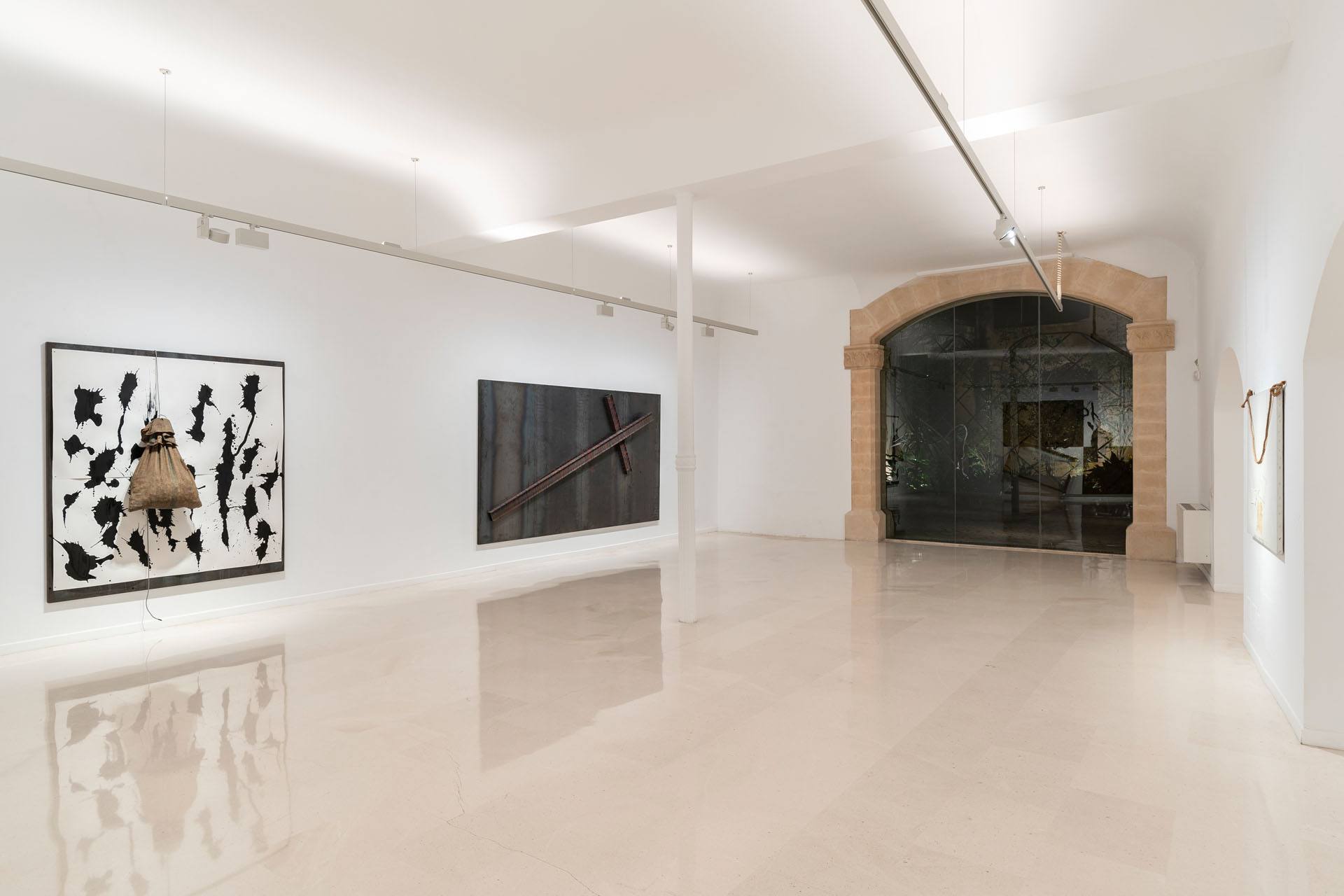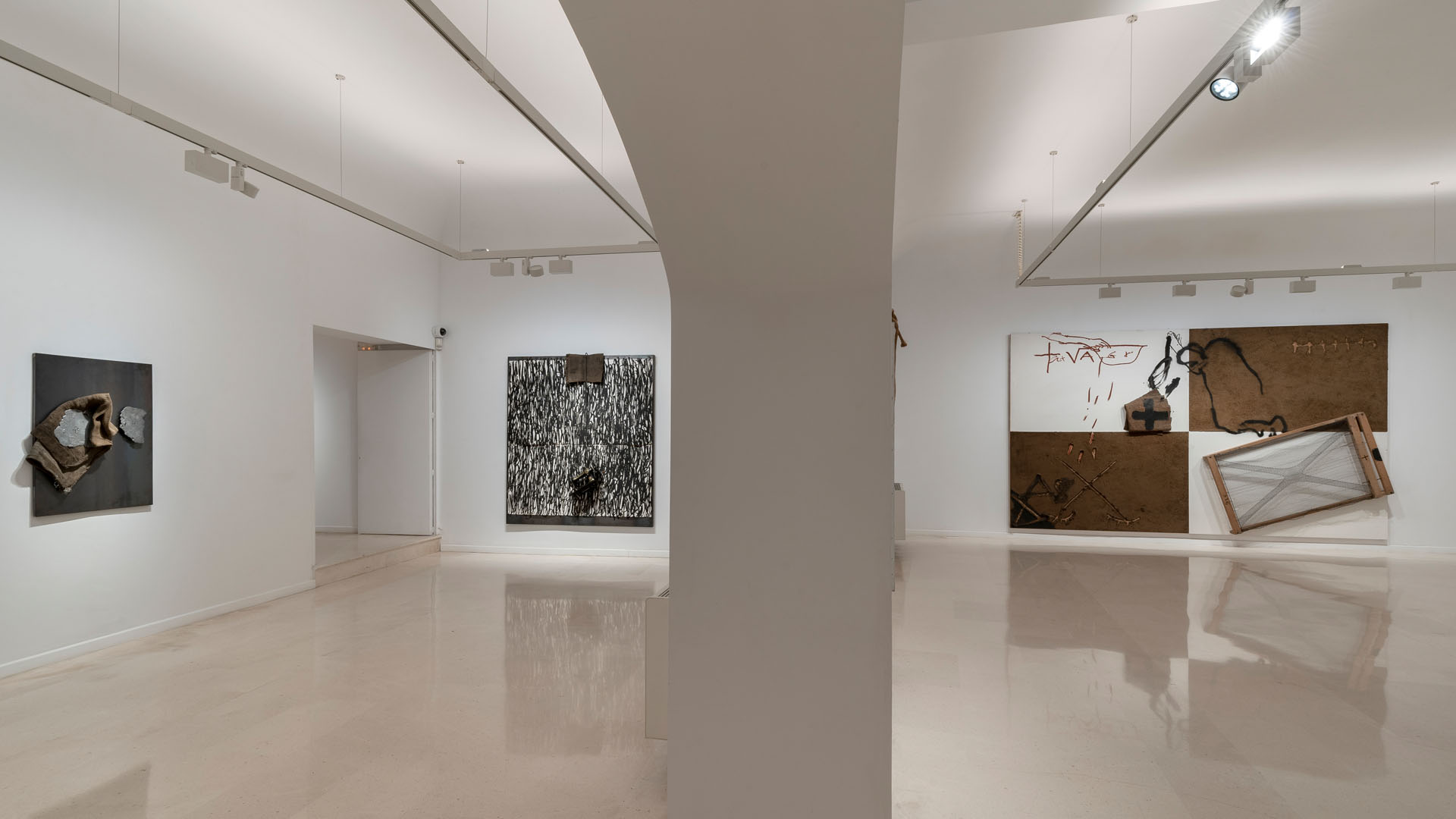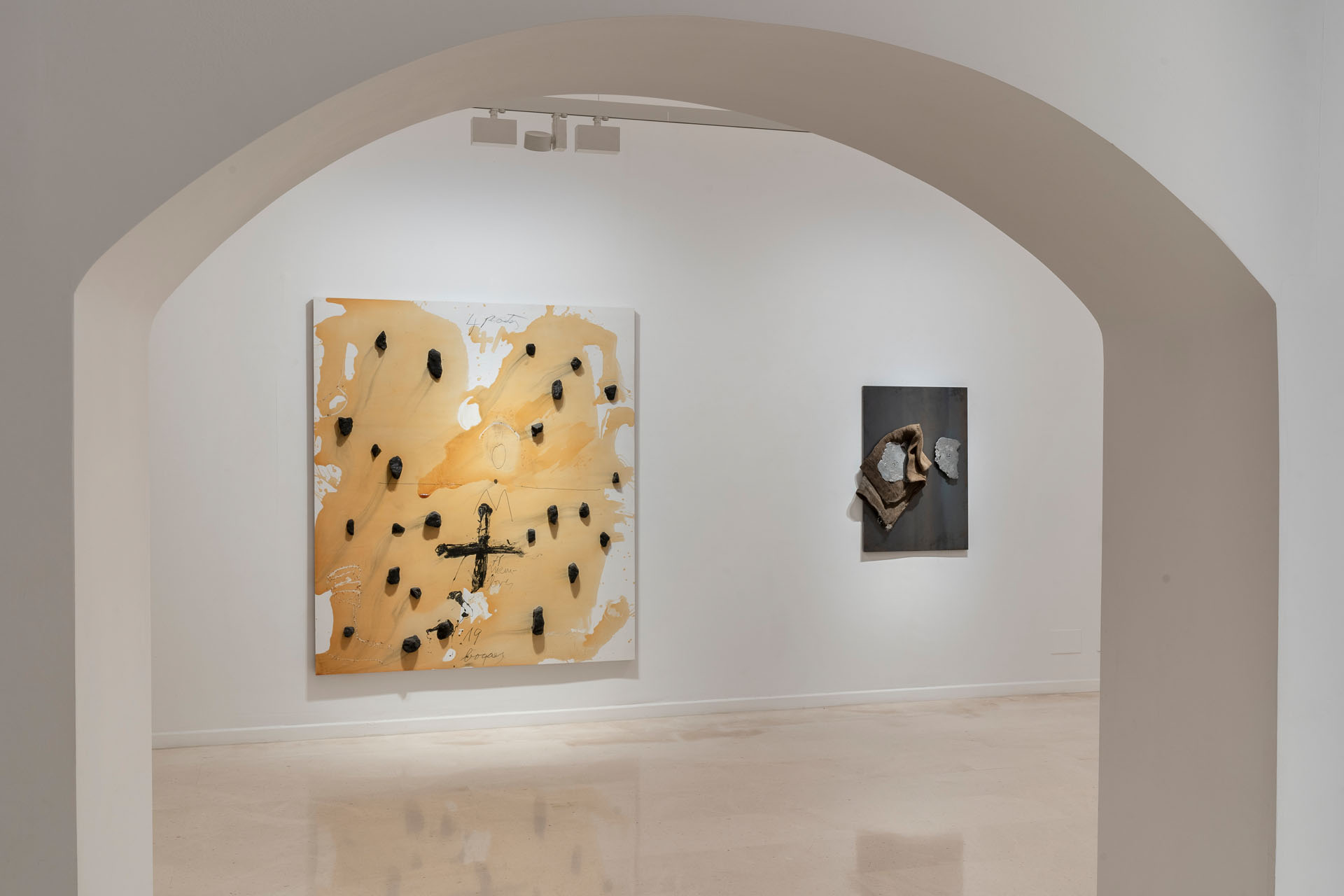

From March 26 to May 31, 2022


Giordano Bruno believed in the infinity of the universe, in the uninterrupted multiplication of beings and ever-changing worlds. In the so-called "Italian Dialogues" published in the late 15th century in London, Bruno developed a theory of the cosmos that broke radically with the heliocentric thinking of previous authors, and that comes down to a striking image to which it returns again and again: countless earths revolving around countless suns. His novel idea of the universe is matched by an equally novel way of understanding the classical concept of matter. For Bruno, matter does not passively receive a form; matter is defined by its changing and dynamic nature instead, as a result of its participation in the infinite life of the cosmos. In other words, form does not condition matter because it is itself matter. Artists and long-time friends Antoni Tàpies and Jannis Kounellis shared with Giordano Bruno the same enthusiasm for the plurality of worlds and suns. Throughout all their works, a delayed and shared effort to perceive the creative movement of matter under formation becomes clear. It is an effort to give back to matter all the movement of creation in which a generation of artists participates and which Germano Celant highlighted in the retrospective exhibition Zero to infinity: Arte Povera 1962-72 held in 2002 at the Tate Modern. In the third fragment dedicated to Tàpies in Material memoria, the poet Jose Ángel Valente reflects on the metaphysics of the infinity of matter that appears in the work of the Catalan artist, using words that could also be dedicated to Kounellis: "A radical presence of matter that reaches the form, but which is above all about formation: forms that dissolve in the original nostalgia of formlessness, of what is strictly speaking indifferent to change and can therefore be transformed into anything, thus becoming the infinite root of all possible forms". According to Tàpies' own reflections, this notion of matter is identified with the fragmentary, the unfinished and the insinuated, that is to say, with a vision of the world in which the process of development is not about becoming but about endlessly becoming. In Comunicación sobre muro, Tàpies described his work process using words that are reminiscent of Bruno's universe: "The millions of furious scratches become millions of grains of dust, of sand [...]. Suggestions of rare combinations and molecular structures, of atomic phenomena, of the world of galaxies, of microscopic images. Symbolisms of dust [...] of ash, of the earth from which we emerge and to which we return". In one of his writings, Georges Bataille referred to Joan Miró's painting as "dust of suns". It is an image that could also serve as an emblem of the relationship between painting and matter in the works by Tàpies and Kounellis. In the latter's work, where inorganic elements give structure and organic elements bring sensibility, ash and charcoal take a central place as processes of decantation and transformation. However, there is another series of works that is closer to Bruno's distressing vision of the cosmos and matter, which also acts as a recurring theme throughout the exhibition. A group of works from the late 1960s featuring burning gas cylinders and blowtorches scattered on the floor. I can't think of a mise-en-scène more in tune with the countless suns as a metaphor for the amazement at the idea of a constantly changing matter than Tàpies' millions of grains of dust and Kounellis' fires.
Javier Sánchez Martínez









